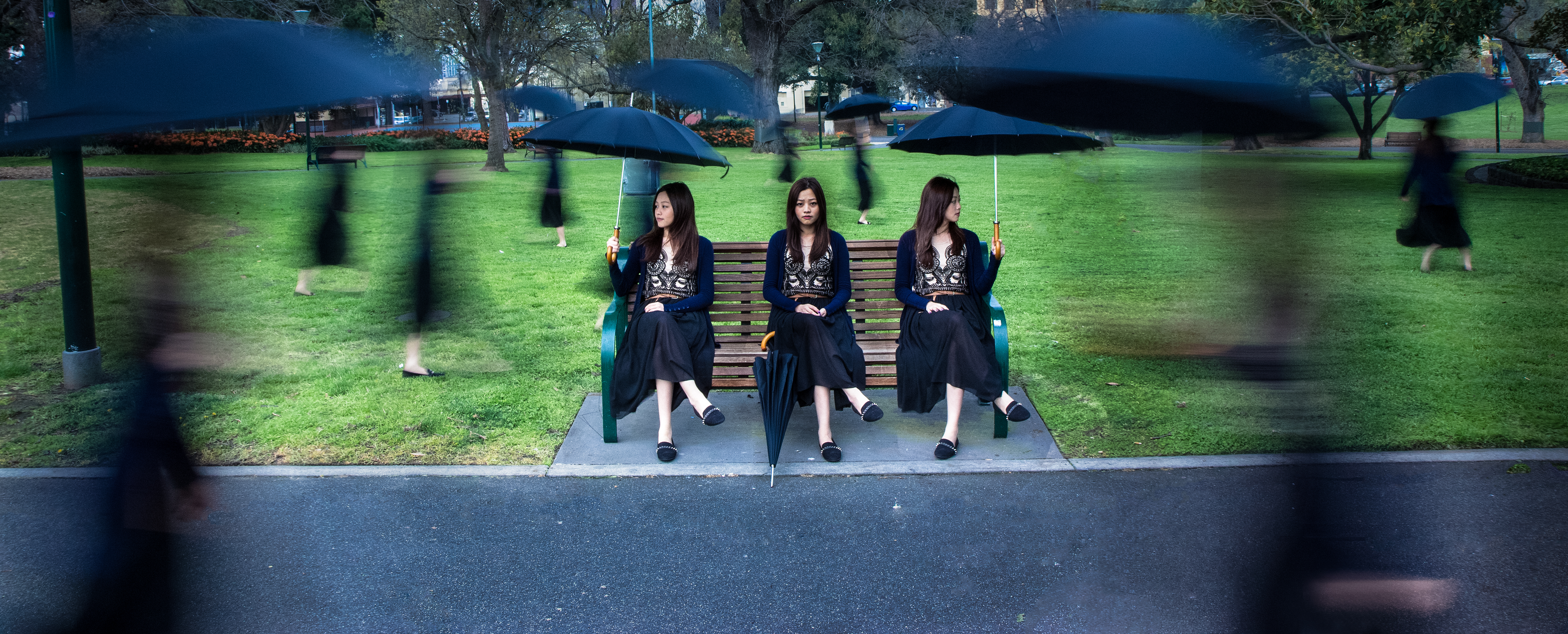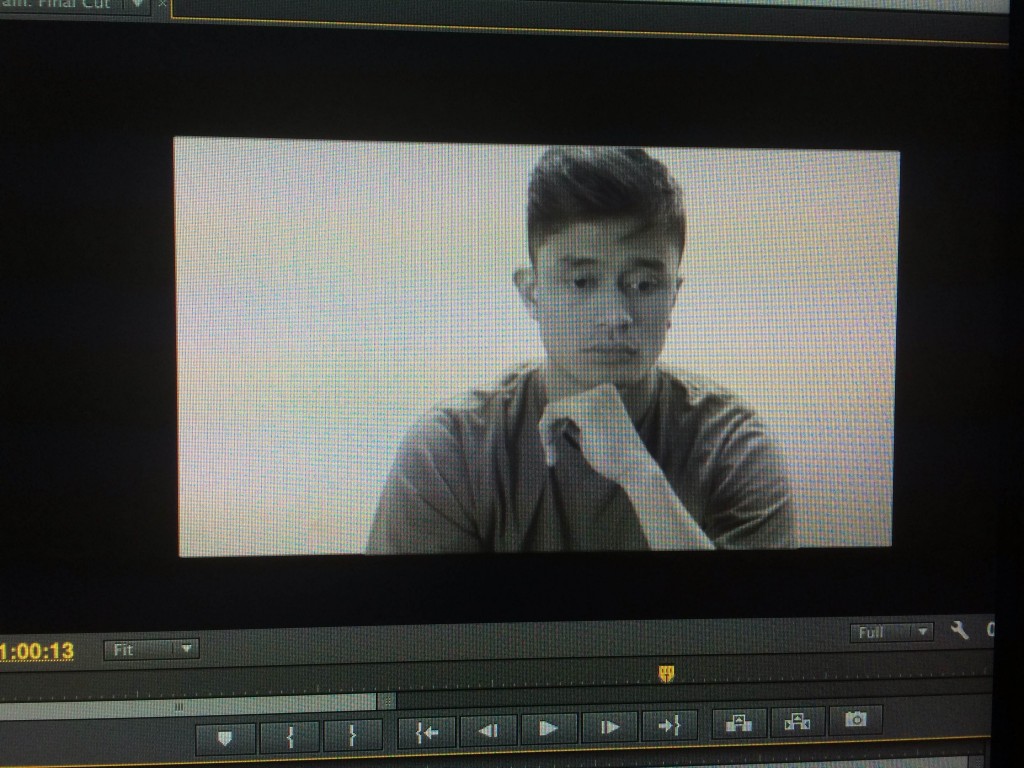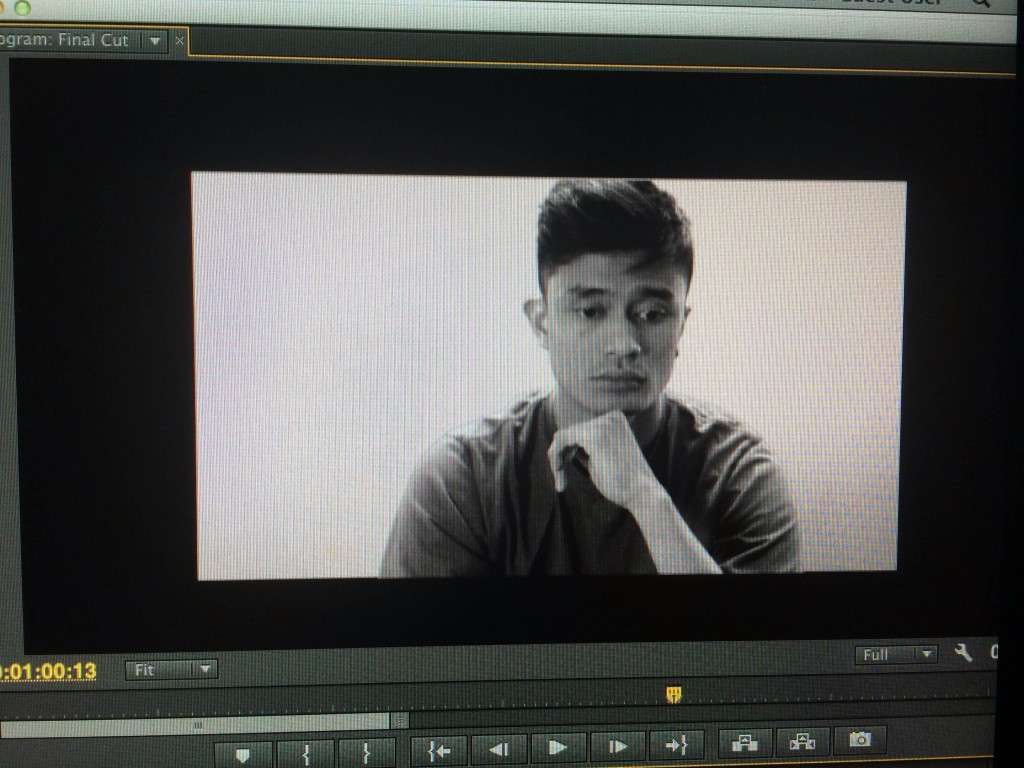Question 1
As per lecture – in a sequence you’ve called ‘colour’ you will have clips that are indicative of a particular colour or lighting state. To the right of that clip you will have that same clip repeated 2 or more times with different colour grades on it.
Take screen grabs of each clip then upload to your blog the series of stills that show us ‘before and afters’ of your colour grading. Provide a few different examples of at least two different clips – each with a description of what you did to the clip and why.
This is a learning exercise, not necessarily a qualitative one, don’t stress – it is the act of doing it and the reflection on that, that is important
For our doco, we used a green screen setup and the lighting has been the same for all interviewees. However, eventhough this entire doco will be in black and white, i still think the colour makes a big differences for the images. Picture one is the one without editing any of the colour and picture two is after editing with the colours. The first differences is that after the colour editing, the image tells more story. Instead of a dull, and plain black and white, we crank up the colour contrast to make a more dramatic effect for deeper story. The second differences for me I think, its the background. Before editing the colour, i’ll feel as if the object and the background are ‘blending’ together whereas the one after editing, the object ‘stands out’ and pops up to make it more appealing.
“In 200 words or less please outline your goals, desires – what you want to get out of this semester. You will review this later in the course. You may rethink this dramatically – this is a good thing.”
You were asked this at the beginning of the semester. Now, could you review constructively what you got from this semester – has the course lived up to your expectations, delivered what you expected, maybe even surpassed it?
At the beginning of the course, when we were asked to outline our goals for the semester, what i had in my mind was, skills, more skills about the camera, the editing, the shooting, the lighting, more skills that I want to get out of this course. But what i felt i got most out of this course is actually experimenting.
For this semester, what i tried to do is mostly experimenting stuff, my group experimented with the green screen, the lighting, the idea, and even the post production. Paul is always encouraging us to try different techniques of editing, trying to put different things together without thinking instead of starting with a plot, because that way you could most probably get the most out of it. I think there is always skills which one can never finish learning, but what i realize was that, experimenting different stuff generates experiences, and thats the most precious thing, the most I got out of this course.


